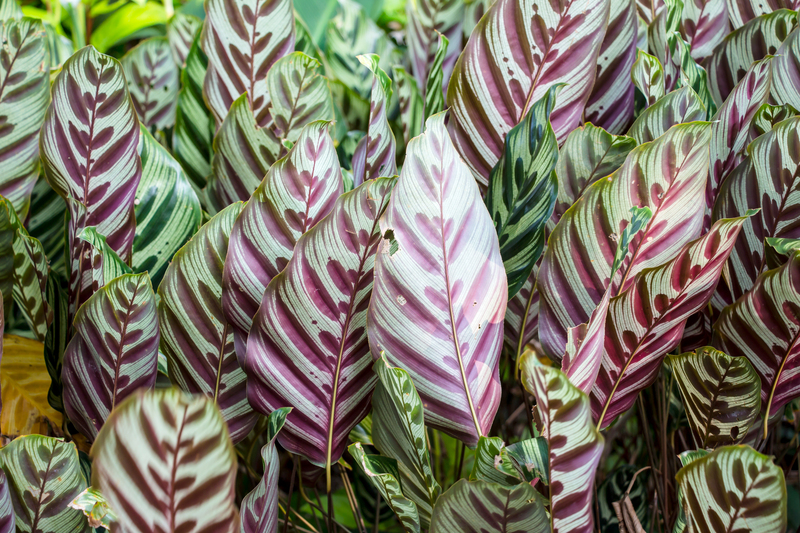Master Mobile Gardening with These 3 Essential Tips
Mobile gardening is quickly becoming a favorite pastime for plant lovers, urban dwellers, and sustainability enthusiasts alike. In a world where space is at a premium and mobility is a necessity, having a flexible garden that moves with you can be both rewarding and practical. Whether you're living in a compact city apartment, traveling in an RV, or simply want to maximize your backyard's potential, learning to master mobile gardening opens a world of fresh possibilities for growing healthy plants anywhere.
In this comprehensive guide, we'll share three essential tips to help you become a pro at mobile gardening. These expert strategies will empower you to create a thriving, portable oasis--no matter where life takes you.

What Is Mobile Gardening?
Mobile gardening refers to growing plants in containers or movable structures, allowing you to relocate your garden at will. This approach is perfect for those with limited outdoor space or unpredictable living arrangements. Container gardening, raised beds with wheels, and portable vertical planters are just a few examples--each offering the flexibility to chase the sun, avoid harsh weather, or simply rearrange your greenery for aesthetics and convenience.
Key benefits of mobile gardening include:
- Flexibility: Easily move your plants to optimal sunlight or protect them from inclement weather.
- Space efficiency: Make the most of small balconies, patios, or even indoor rooms.
- Better control: Manage soil, pests, and microclimates more effectively.
- Accessibility: Garden at a comfortable height or adapt to mobility needs.
- Versatility: Grow herbs, veggies, flowers, or ornamentals--wherever you are.
Why Should You Try Mobile Gardening?
Today's fast-paced, urbanized lifestyle doesn't always allow for traditional gardening. Mobile gardening solutions let anyone--even renters, travelers, and busy professionals--enjoy the physical, mental, and environmental benefits of cultivating plants. You don't need acres of land; just a little creativity and the right know-how will have you harvesting fresh produce, beautifying your living space, and nurturing biodiversity.
3 Essential Tips to Master Mobile Gardening
Now that you're excited about the potential, let's dive into the three essential tips for success in mobile gardening. With these tried-and-true methods, you'll be well on your way to becoming a mobile gardening master.
1. Choose the Right Containers and Mobility Solutions
Your container choice is a fundamental element in creating a successful portable garden. Since your garden will often be on the move, durability and functionality matter as much as aesthetics.
Factors to Consider When Selecting Containers:- Material: Opt for lightweight materials like plastic, fabric grow bags, or resin, which are easy to lift and transport. Ceramic and terracotta offer beauty but can be heavy.
- Drainage: Ensure containers have adequate drainage holes. Poor drainage can cause root rot and other issues.
- Size: Select container sizes that match the plant's root system and are manageable to move. Deeper containers are better for root vegetables, shallow ones for herbs.
- Mobility Features: Look for pots with built-in wheels, or use sturdy plant caddies, trolleys, or dollies to avoid strain.
- Insulation: Mobile planters may be more exposed to temperature swings. Consider double-walled containers or insulation for sensitive plants.
Innovative Mobility Ideas:
- Vertical garden towers: Maximize vertical space with stackable units that roll or swivel.
- Raised beds on wheels: Ideal for patios, balconies, and accessibility.
- Hanging planters: Great for balconies and small patios; easy to move from hooks and racks.
- Repurposed items: Use old carts, wheelbarrows, or even suitcases for a mobile, eco-friendly twist.
2. Master the Art of Soil and Water Management
Good soil and proper watering are the backbone of any mobile gardening system. Because portable planters dry out faster and may be exposed to more wind and sun, you need to be extra attentive to your plants' growing medium and moisture needs.
Building the Ideal Potting Mix for Mobile Gardens:- Use high-quality potting soil: Choose a premixed potting blend designed for container gardening. Avoid using garden soil, which can be too dense and slow to drain.
- Boost with amendments: Add compost, worm castings, or organic slow-release fertilizer for sustained nutrition.
- Enhance drainage and water retention: Mix in perlite or vermiculite to improve drainage while retaining moisture. Coir or peat can help hold water in hot climates.
- Mulch: Top your container soil with 1-2" of mulch (straw, wood chips, or stones) to reduce evaporation and temperature fluctuations.
Smart Watering Strategies for Mobile Planters:
- Test frequently: Stick your finger about 1-2 inches into the soil; if it's dry, water thoroughly. Containers can dry out daily in hot weather.
- Water slowly and deeply: Allow water to soak the soil thoroughly--shallow watering leads to weak roots.
- Self-watering containers: These feature built-in reservoirs and wicking systems for efficient water delivery--ideal for busy gardeners or trips away from home.
- Use trays: Place containers on shallow trays to catch excess runoff and keep patios tidy.
Pro tip: If you have many containers, consider a simple drip irrigation system or soaker hoses on a timer for consistent, efficient watering.
3. Position and Rotate Your Mobile Garden for Optimal Sunlight
One of the greatest advantages of moveable gardens is the ability to optimize sunlight exposure. Plants require different amounts of light, and the sun's intensity shifts throughout the year. By regularly relocating your mobile planters, you ensure your plants always receive just the right amount of sun or shade.
Tips for Sunlight Management in Portable Gardens:- Track the sun's path: Observe how the sun moves across your growing area to maximize exposure for sunlight-loving species or protect shade-loving varieties.
- Seasonal adjustment: As the seasons change, relocate your containers to capture weaker winter sun or shield from the harsh summer midday rays.
- Rotate containers: Turn and reposition pots so all sides of the plant receive even light, aiding healthy, symmetrical growth.
- Utilize indoor and outdoor spaces: In apartments, move plants onto balconies or sunny windowsills as needed. During storms or frosts, simply wheel your garden inside or under shelter!
Bonus: Protecting and Customizing Your Mobile Garden
- Wind and weather: Shield lightweight containers from high winds that can topple or dry out soil. Use windbreaks or group pots for mutual shelter and humidity retention.
- Pest control: Portable gardens are easier to inspect and move away from problem areas. Use physical barriers, organic treatments, or beneficial insects.
- Accessibility: Mobile setups can be adapted for children, seniors, or gardeners with physical limitations.
- Personalization: Arrange containers into eye-catching displays, change layouts with the seasons, or move favorite blooms closer to your seating area for enjoyment and relaxation.
Mobile Gardening Success Stories
Across the globe, creative mobile gardening is transforming lives. Urban residents are growing bountiful vegetables on rooftop decks with wheeled planters. RV owners cultivate fresh salad greens while travelling cross-country. Renters bring beauty to balconies using modular, portable garden beds. And community groups create pop-up gardens at schools and public spaces, fostering green education and local food resilience.
With thoughtful planning and these essential tips, anyone can enjoy the many rewards of mobile gardening--no matter your location or lifestyle.
The Best Plants for a Mobile Garden
Not all plants are equally suited for a mobile gardening environment. When choosing what to grow, consider both the space you have and the plant's light, water, and root requirements. Here are some tried-and-true favorites for portable gardens:
Best Edibles:- Lettuce, spinach, and other leafy greens
- Herbs: basil, thyme, parsley, mint, cilantro
- Dwarf tomatoes and peppers
- Strawberries
- Radishes and baby carrots
- Green onions and chives
- Pansies, violas, and petunias
- Marigolds and zinnias
- Dwarf dahlias and tulips
- Succulents and cacti
- Lavender and aromatic geranium
Remember: Compact, fast-growing, or shallow-rooted species tend to thrive in containers and are easier to manage as you move your garden.

Frequently Asked Questions About Mobile Gardening
Is mobile gardening expensive?
It doesn't have to be! While there are luxury planters and specialized tools on the market, many mobile gardening solutions rely on simple, recycled materials and DIY know-how. Reuse old buckets, pallets, or carts, or look for affordable grow bags. Start small and expand as your confidence grows.
How often should I fertilize my mobile plants?
Containerized plants benefit from regular feeding, as nutrients wash out faster with frequent watering. Use a balanced liquid fertilizer every 2-4 weeks, or amend with slow-release granules per label instructions. Don't overdo it--too much fertilizer can cause salt buildup.
Can I grow a mobile garden indoors?
Absolutely! Many mobile gardening setups thrive indoors, provided they have adequate sunlight or supplemental grow lights. Herbs, greens, succulents, and many flowers adapt well to mobile planter solutions on sunny windowsills, carts, or plant stands.
How do I manage pests in a mobile garden?
Because mobile gardens are easy to inspect and relocate, you gain an edge against pests. Check plants regularly, use natural deterrents (like neem oil or insecticidal soap), and isolate new arrivals before mixing them with established containers.
Conclusion: Grow Anywhere, Anytime with Mobile Gardening Mastery
Mastering mobile gardening is a game-changer for today's gardeners--whether you have a sprawling backyard, a modest balcony, or a nomadic lifestyle. By choosing the right containers, managing soil and water wisely, and optimizing sunlight through strategic positioning and rotation, you'll reap lush rewards wherever you plant your roots.
Now is the perfect time to embrace the freedom and creativity of portable gardening. Start with these three essential tips, experiment boldly, and watch your mobile garden flourish--no matter where your journey leads. Let your green thumb go mobile and transform any space into your personal oasis!